Google Keyword Planner is aKeyword researchtool, which advertisers use as the primary basis for phrases suggested by Google. It helps advertisers discover keywords that are relevant to their search campaigns to ensure ads are delivered to the right audience segments. Importantly, the tool provides estimates of search volume and cost for the appropriate terms.
This is the ultimate guide to using Google Keyword Planner.
In this guide, I'm going to show you how to get the most SEO value out of this brilliant tool.
Step 1: Visit Google Keyword Planner
Yes, Keyword Planner is a free tool.
But there's a problem:
In order to use Google Keyword Planner, you need to have aGoogle AdsAccount.
If you don't already have a Google Ads account, it only takes a few minutes to create one:
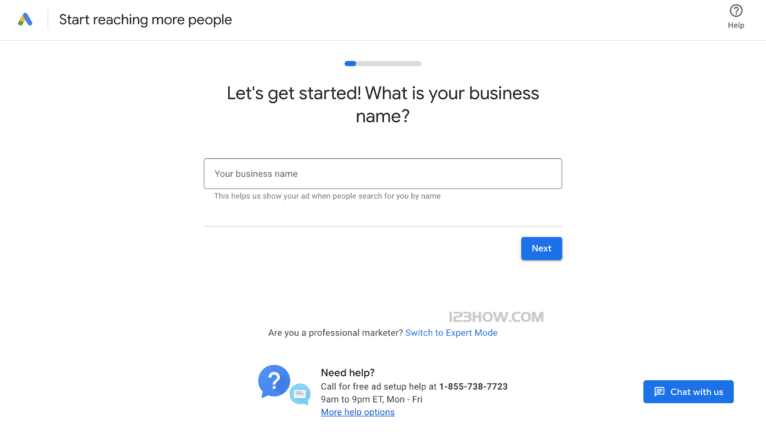
(Just follow the prompts and enter some information about your business and you're good to go.Note: YouIt is not necessary to run an active campaign to use Keyword Planner. (However, at least one Google Ads campaign needs to be set up.)
Next, sign in to your Google Adwords account. Click on the Tools menu item on the left side of the screen.
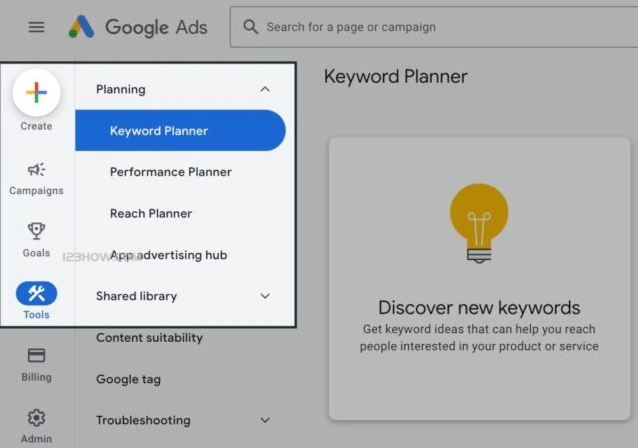
Then, select "Keyword Planner":
You'll see 3 different tools in Keyword Planner: "Discover New Keywords", "Get Search Volume and Predictions" and "Organize Keywords into Ad Groups".
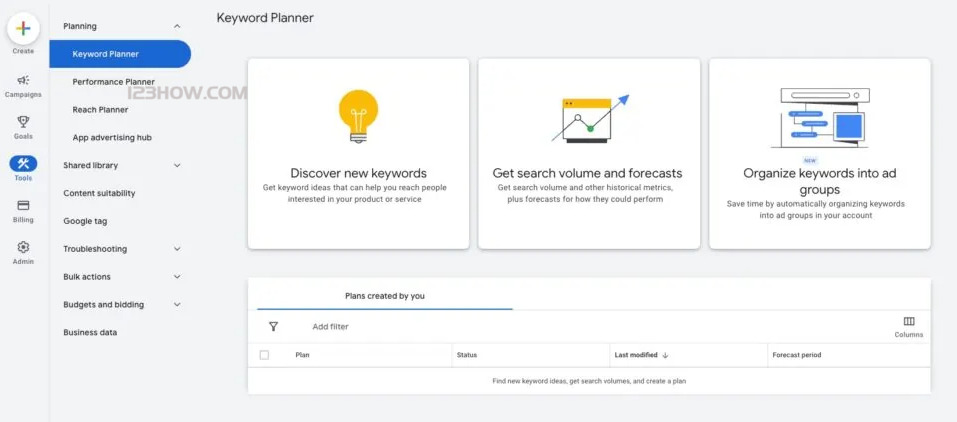
When it comes to SEO-centered keyword research, the first two tools are enough to generate thousands of potential keywords.
To be clear:
This tool is designed for PPC advertisers. Therefore, if you use this tool to find SEO keywords, many of the features in the tool (such as the keyword bidding feature) will be useless.
Now, I'm going to show you how to find SEO keywords using each of the tools built into Google Keyword Planner.
Step 2: Select your tool
There are two main tools within GKP.
Now I'm going to show you how you can use these two tools to help you create massive keyword lists for your SEO campaigns.
1. Discovering new keywords
As the name suggests, this tool is perfect forFind new keywords.
As you can see, the field at the top of this tool reads, "Enter a product or service that is closely related to your business."

Quick Tip:The values provided by Keyword Planner depend heavily on the information you enter here. Therefore, you need to be very strategic in choosing what you enter in this field.
So, to help you make the most of this tool, I'm going to break down the two main options one by one.
"Start with a keyword": These are words and phrases that describe your business (e.g. "weight loss" or "coffee"). This gives you access to Google's internal database of keywords for different industries.
Pro Tip: YouMultiple keywords can be entered in this field. Simply add a comma after each keyword and press Enter. For example, if you run an e-commerce site that sells cookies, you would enter the words "gluten-free desserts" and "low-carb cookies" here.
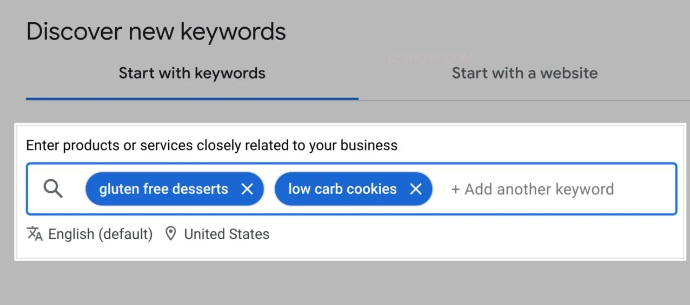
"Start with the website": This is designed for Adwords users. But sometimes you can find some solid keywords here using your site's homepage or articles on your site.
After entering your information in one (or all three) of the fields, click "Get Results".
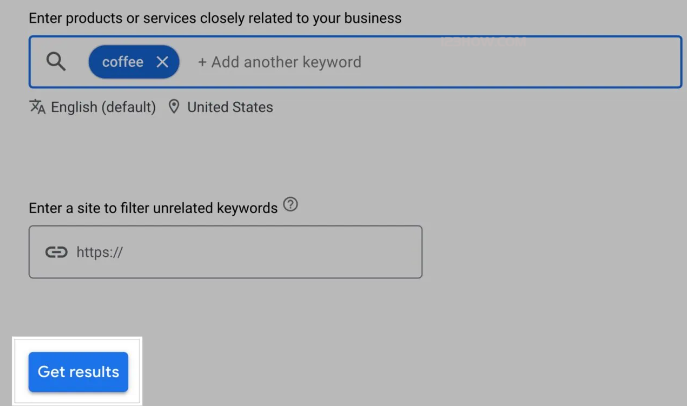
Next, you will see the keyword results page. Later in this guide I will show you how to use this section of Keyword Planner.
Now, let's dive into the second tool in GKP: search volume and prediction.
2. Obtaining keyword search volumes and forecasts
This feature is only really useful if you already have a long list of keywords and only want to check their search volume. In other words, this tool will not help you generate new keyword ideas.
To use it, copy and paste the list of keywords into the search field and click "Start".
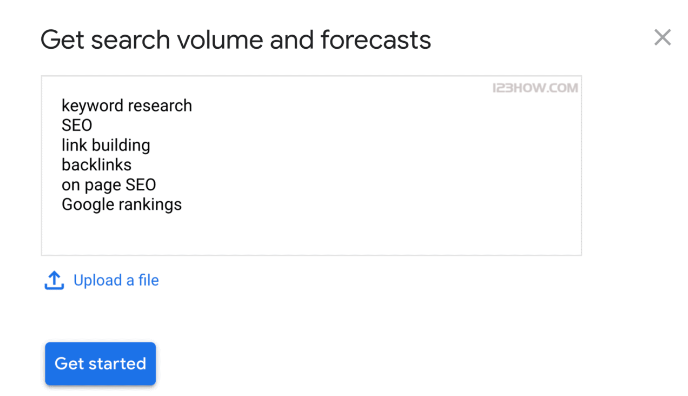
You will also see the same keyword results page as when using the Find New Keywords tool.
The only difference is that a) you only get data for the keywords you enter and b) Google predicts how many clicks and displays you will get from the keywords you enter:
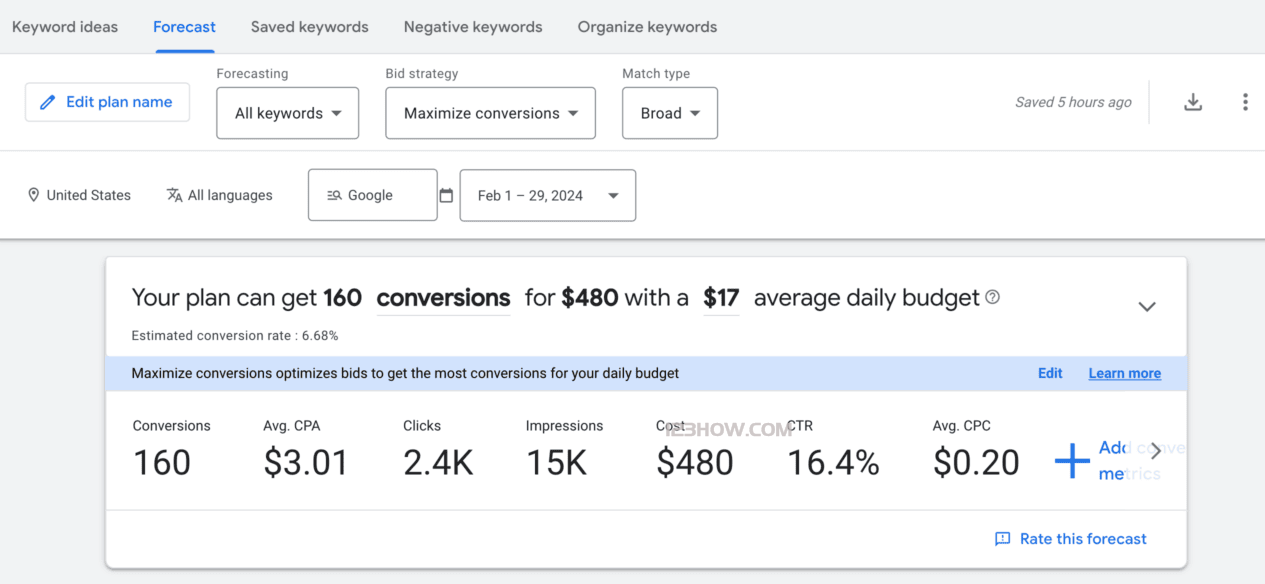
Regardless of which tool you end up using, you end up in the same place: the keyword results page.
Now it's time to dive into how that page works ...... and how to make the most of it.
Step 3: Filter and Sort Results
Now it's time to filter the list of keywords into a smaller list of terms that work best for you.
Both of the tools I just described will take you to the "keyword results page" as shown below:
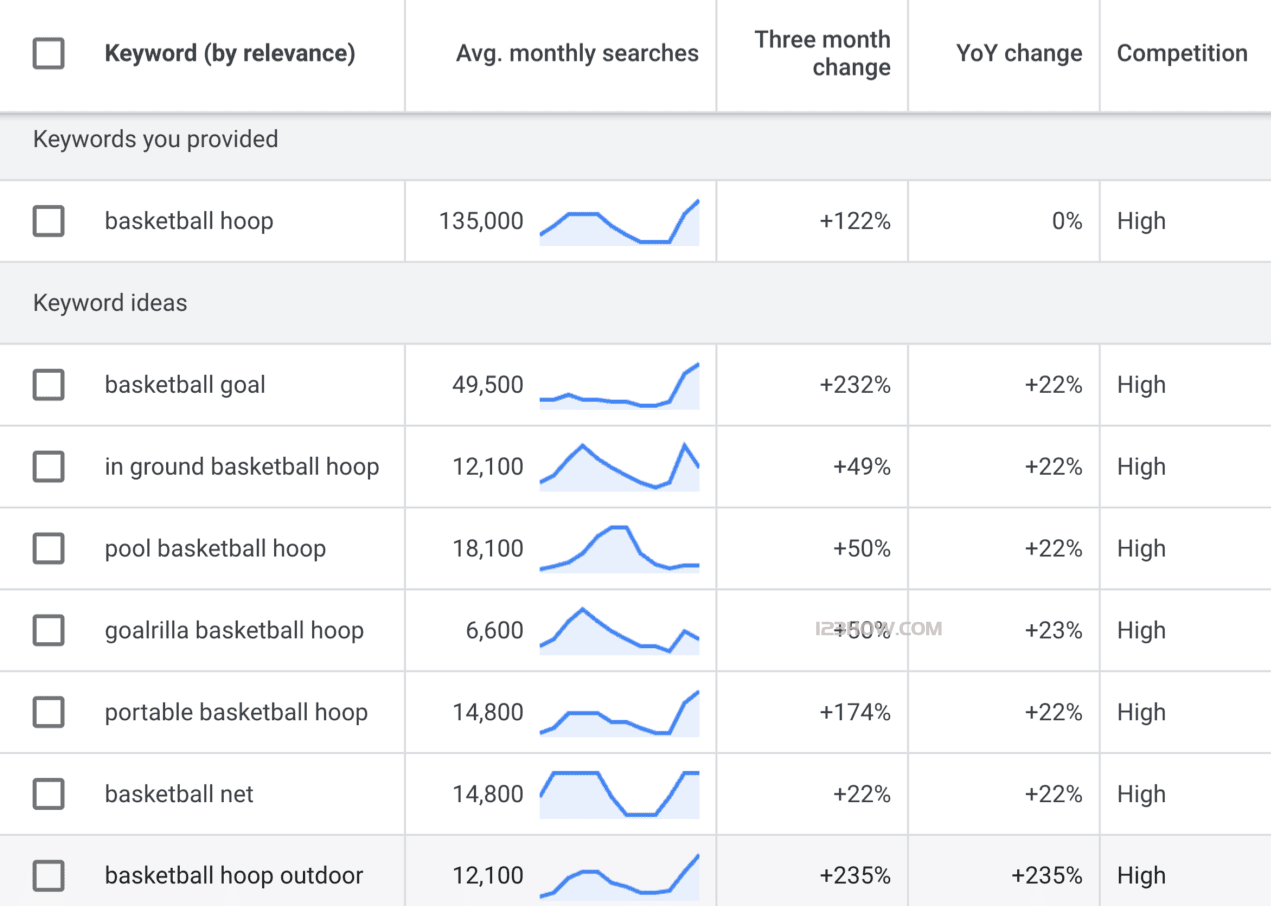
Here are the details of that page:
At the top of the page, you'll notice four positioning options: location, language, search network, and date range.

The meaning of these four things is as follows:
point
This is the country/region (or countries/regions) you want to market to. It's simple.
multilingualism
This is the language of the keyword for which you want to view information.
"Location" and "Language" are automatically set to target English-speaking people in the United States. If this is your target audience (and it is in most cases), you can leave these options as they are.
But let's say you are located in Germany. You need to change the location to "Germany" and select "German" as the language.
Search the Web
This indicates whether you want to advertise only on Google ...... or Google and its "Search Partners". Search partner sites include other search engines and Google assets such as YouTube.
I recommend leaving this setting as "Google".
Date range
Leaving the default "12 months" is usually sufficient.
The next important feature of the keyword results page is the "Add Filter":
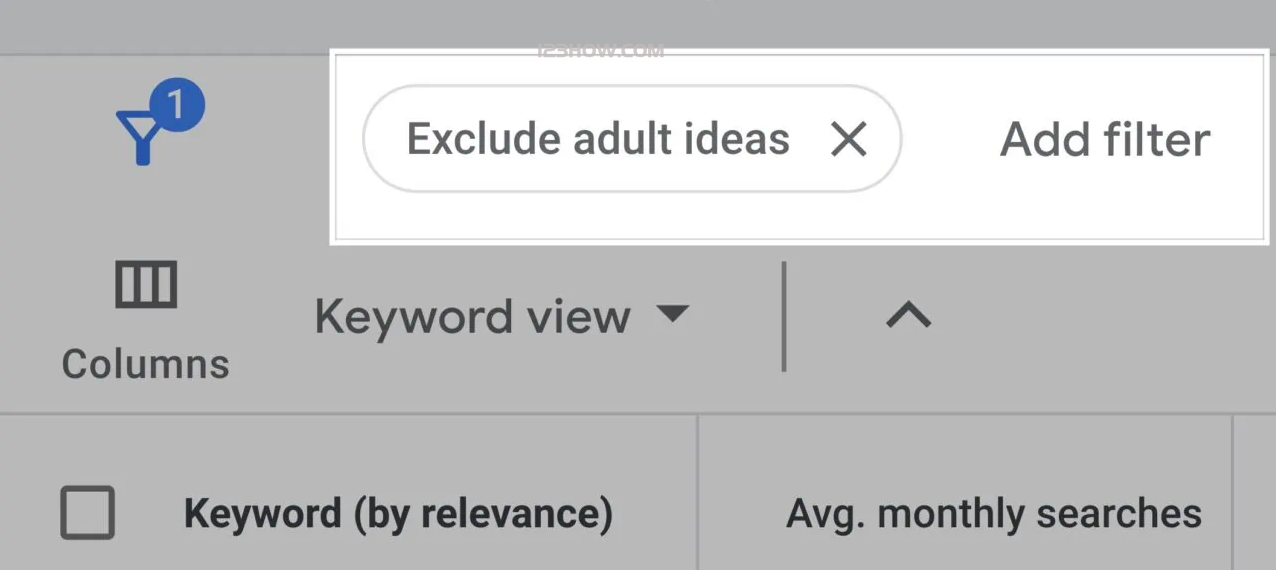
This feature gives you tons of filtering options. So let me quickly break down each option for you.
Keyword text
Here, you can have the tool display only keywords that contain specific words or phrases.
Why do you include certain keywords?
Let's say you've just launched a line of blue t-shirts. In this case, you need to make sure that the keyword "blue t-shirts" appears in all the keywords suggested to you by your keyword planner.
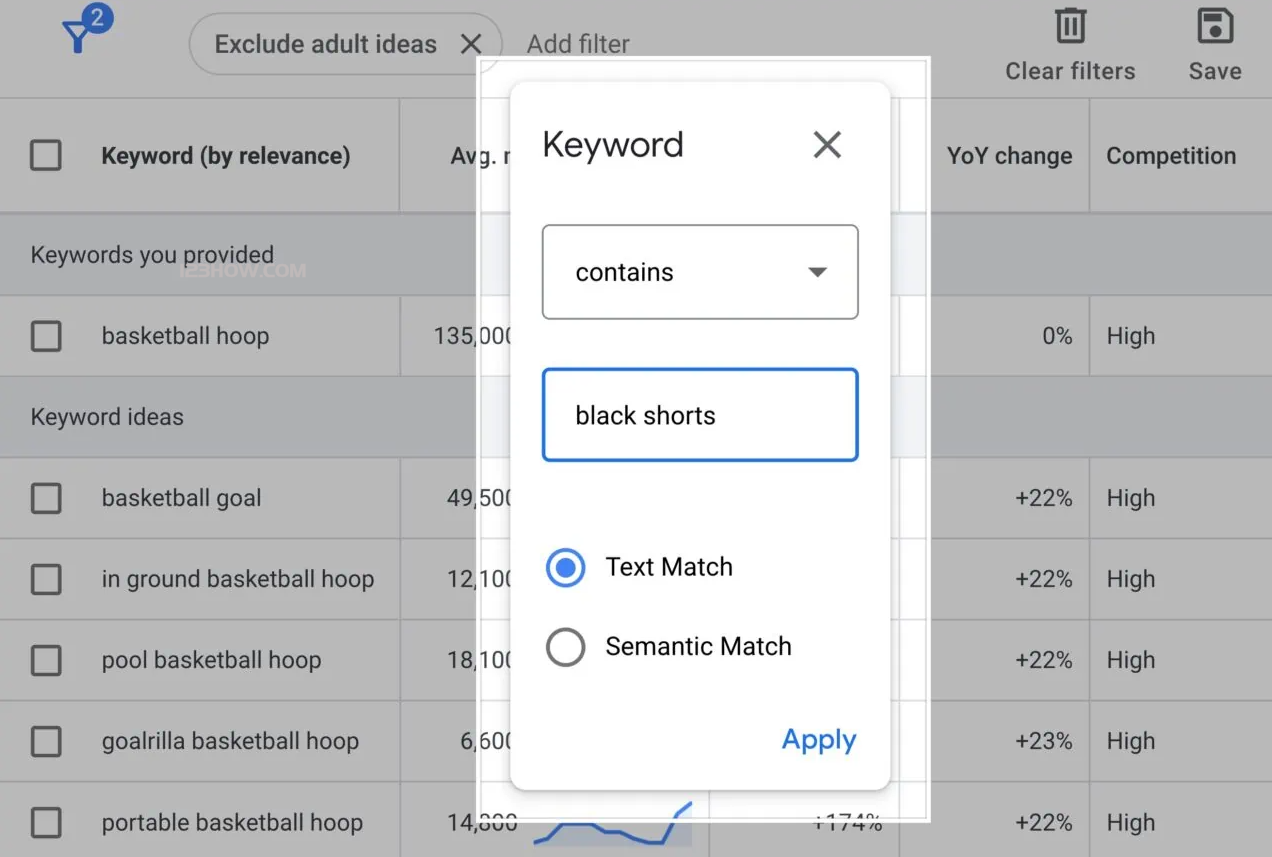
Exclude keywords from my account
This will exclude keywords that you are already bidding on in Adwords.
Excluding adult thoughts
Self-explanatory (I hope).
Average monthly search volume
This helps filter out keywords that have a high search volume (after all, they are very competitive). You may also want to filter out keywords that don't have a high search volume.
For example, let's say you get a large list of keyword ideas:
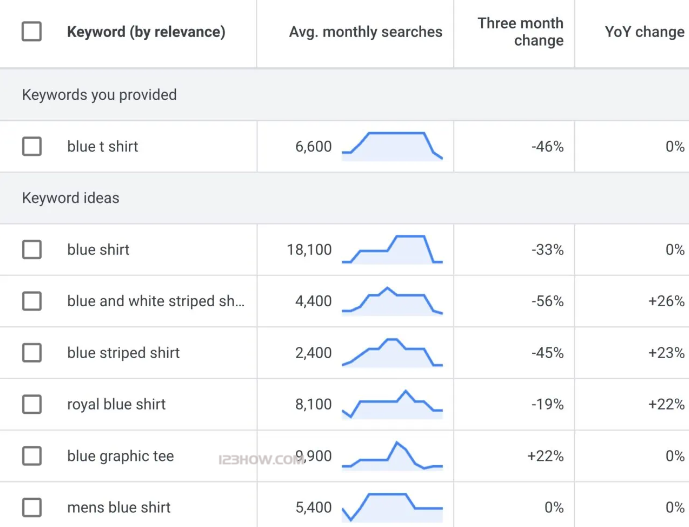
You can sort the results by clicking on "average monthly searches".
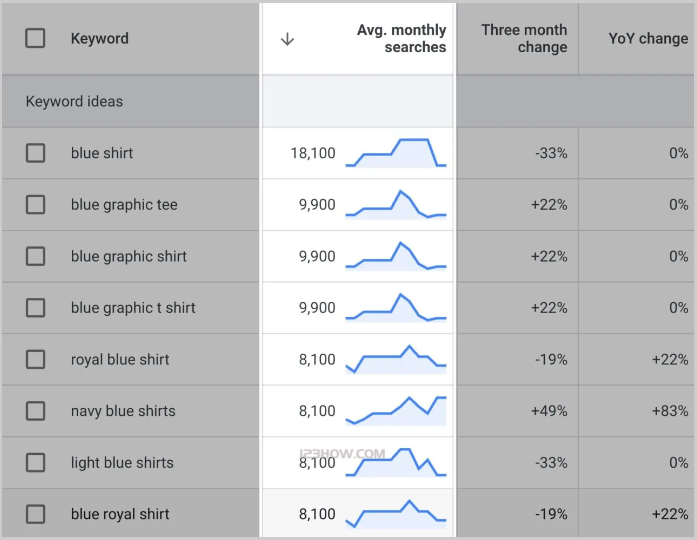
That way, you'll only see keywords with a high search volume.
You can also do the opposite. Click on "Average Monthly Searches" again and you will get a list of low search terms:
sweepstakes
You can tell Google Keyword Planner to show only keywords with "low", "medium" or "high" competition.
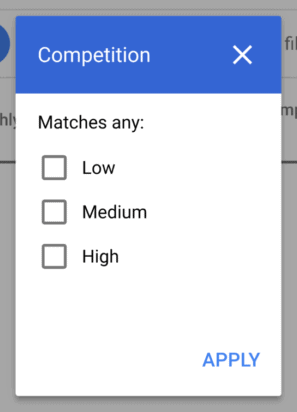
This feature confuses a lot of people.
Remember: Google Keyword Planner 100% is designed for Google Ads... Not SEO.
Therefore, the "Competition" score here refers only to the level of AdWords competition (not the competitiveness of the keywords ranking in Google's natural search results). Therefore, I recommend leaving it blank.
Ad display share
Again, this setting only applies to Adwords, so for SEO purposes, we can ignore this filter.
Top of Page Bid
This is the amount you can expect to pay to have your ad appear at the top of the page for that keyword.
(This used to be called "cost per click" or "CPC".)
Top-of-page bids are a proxy indicator of business intent. Therefore, if you only want to target keywords that potential buyers are searching for, then you can set it to a certain amount.
As you can see, there are two options "High Range" and "Low Range".
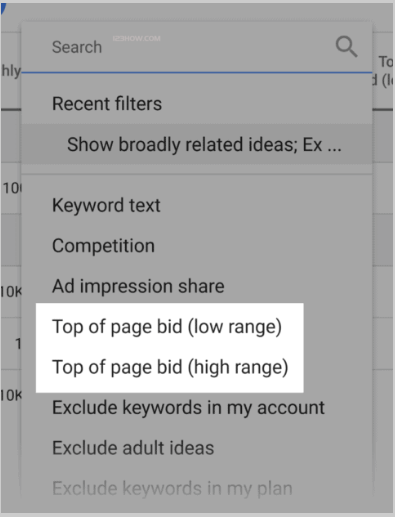
I personally set the "low range" to a few dollars. That way, I can filter out keywords that don't have any commercial intent.
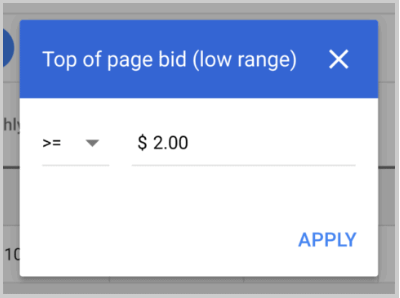
Natural display share
This is how often your site appears in the natural search results for each keyword. (Note: To use this feature, you will need to connect your Google Search Console account to Google Adwords).
Natural Average Ranking
Your rank (on average) for each keyword in Google's natural rankings. Again, you need to be connected to GSC for this to work.
That's what filtering is all about.
The last feature to note on the keyword results page is the "expand search".
This is a new feature that shows you keywords that have some relevance to the terms you enter.
For example, when you search for "Paleo Diet" you will get the following list of suggestions:
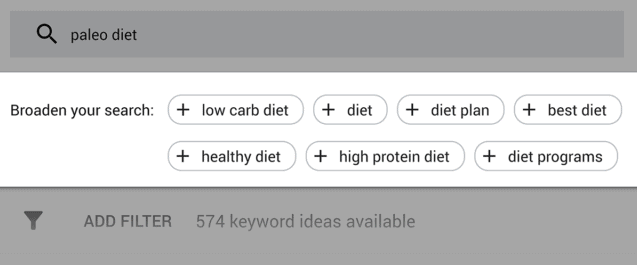
Step 4: Analyze the Keyword Ideas section
Now that you've filtered the results down to the keywords that best fit your business, let's break down the remaining terms.
Specifically, I'm going to show you how to analyze the terms displayed in the Keyword Ideas section of Keyword Planner.
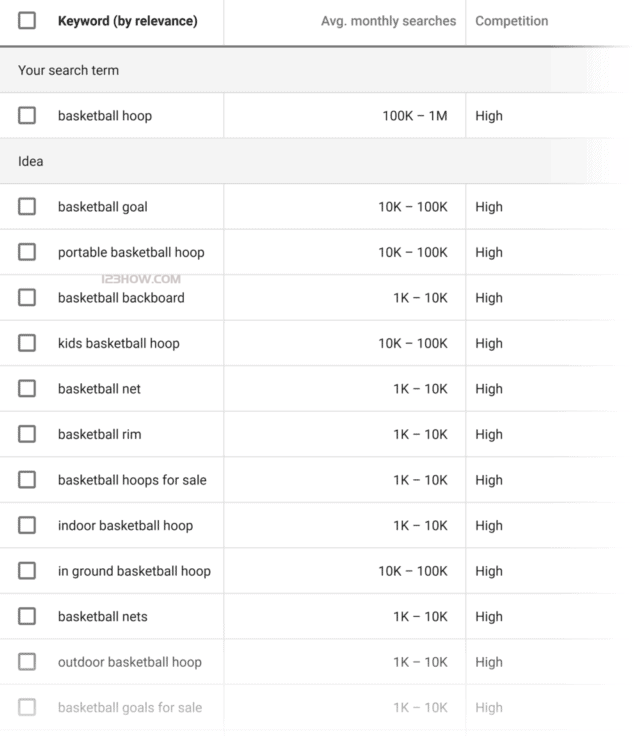
The meaning of each term in this section is as follows:
Keywords (by relevance)::This is a list of keywords that Google considers most relevant to the keyword or URL you entered.
Average monthly search volume::Very intuitive. However, keep in mind that this is a range ...... not a hyper accurate indicator of search volume.
(I'll show you how to get more accurate search volume data in a minute.)
tip from the expert::Pay attention to seasonal keywords. That's because a seasonal keyword (such as "Halloween costumes") might get 50,000 searches in October, while it might get 100 searches in May. But GKP will say the term "gets 10,000 searches per month," which is a bit misleading.
competitiveness::As I mentioned before, the "competition" in Google Keyword Planner has nothing to do with SEO. Instead, the "competition" is simply the number of advertisers bidding on the keyword. But it's useful to see if the keyword has any commercial intent (after all, the more people who bid on a keyword, the more likely they are to become a prospect or customer).
Top of Page Bid::This is another good way to measure the profit potential of your keywords. The higher the bid, the more profitable the traffic will be.
Step 5: Select Keywords
Now that you've learned how to use all the tools, features, and options in Google Keyword Planner, next comes the final step: finding quality keywords that will optimize your site's content.
It's tricky.
Why? There are many factors to consider when choosing keywords. It's more of an art than a science.
That said, I like to learn from examples. So, I'm going to walk you through a simple example to help you select a keyword from the list.
(In this example, I'm going to use the "Discover New Keywords" tool because it's the best way to discover new keywords in Google Keyword Planner.)
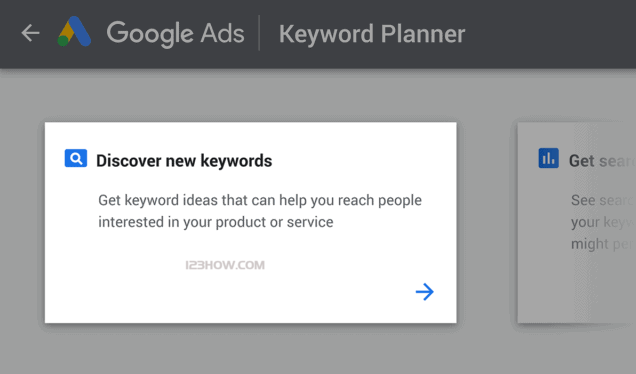
First, you need to think of a broader range of keywords ...... but also describe your product, service or content idea.
For example, let's say you run an e-commerce site that sells organic food.
If you want to write a blog post about the health benefits of organic coffee, you wouldn't use the keywords "coffee" (too broad) or "health benefits of organic coffee" (too narrow).
But keywords like "organic coffee" will work well.
So enter that keyword into the field and click Start.

Look at the keywords that appear:
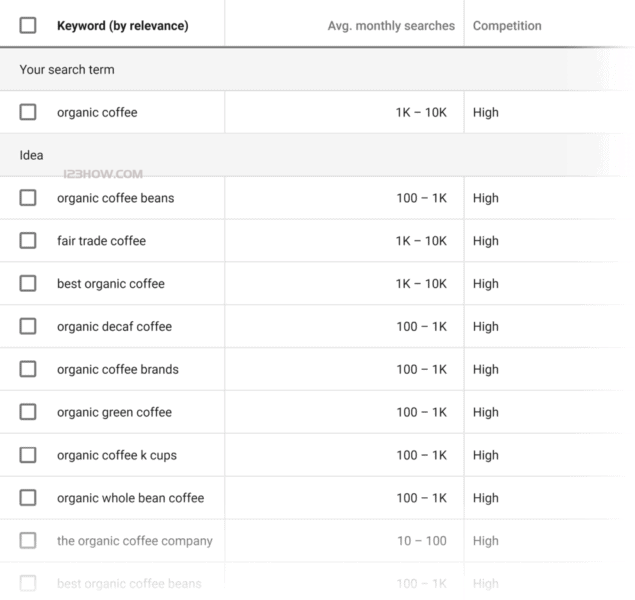
So: how do you know which keywords to choose?
There are a variety of factors to consider. But in general, I like to choose keywords based on the following three main criteria:
search volume: It's very simple. The higher the average search volume, the more traffic that keyword can bring you.
Commercial intent: Generally speaking, the more competition and the higher the suggested bid, the easier it is to convert traffic into paying customers when they visit your site.
Organic SEO Competition: As with business intent, evaluating the competition for keywords in Google's organic search results requires a little more digging. You need to look at the sites ranking on the first page of ...... and figure out how difficult it is to outrank them. This SEO Keyword Competition Guide covers everything you need to know.
Bonus Step 1: Get accurate keyword search volume data
If you are running an effective AdWords campaign, Google Keyword Planner will only show you accurate search volume data. Otherwise, you will see arealm, as shown below:
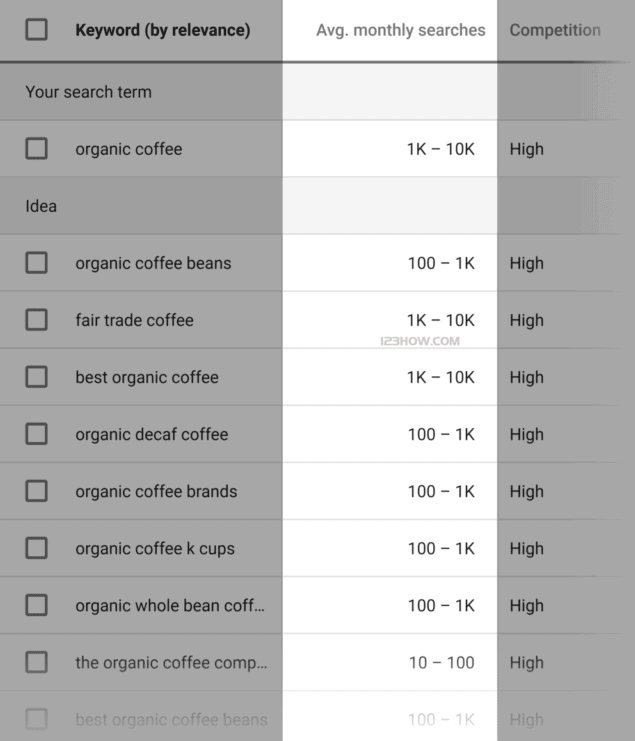
To be honest, this range is actually okay for me. Keyword volume fluctuates anyway. So even the "exact" average monthly searches you've seen in GKP in the past are just a rough estimate.
In other words, there's nothing wrong with choosing keywords based on a range of search volume.
That said, you can use a clever trick to get accurate search volume from GKP ...... without having to place ads in your Google Adwords account.
Here's how it works...
First, find the keyword you want to locate in the list of suggestions:
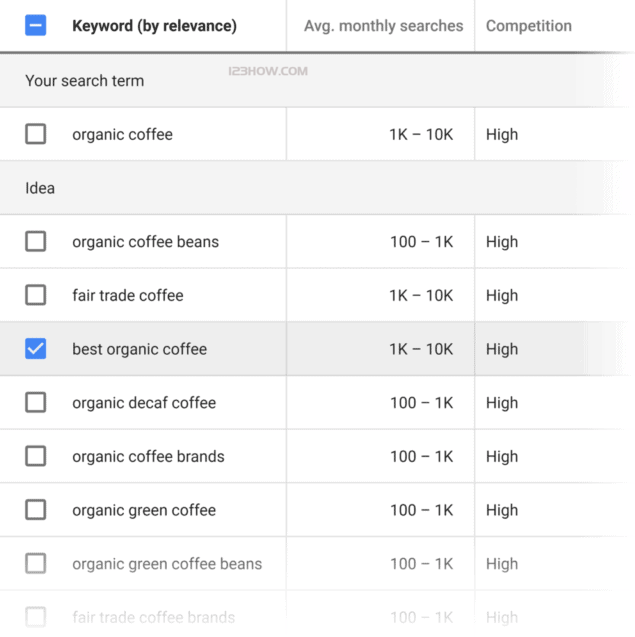
Then click "Add to Plan":

Next, in the right sidebar of the page, click on "Program Overview":
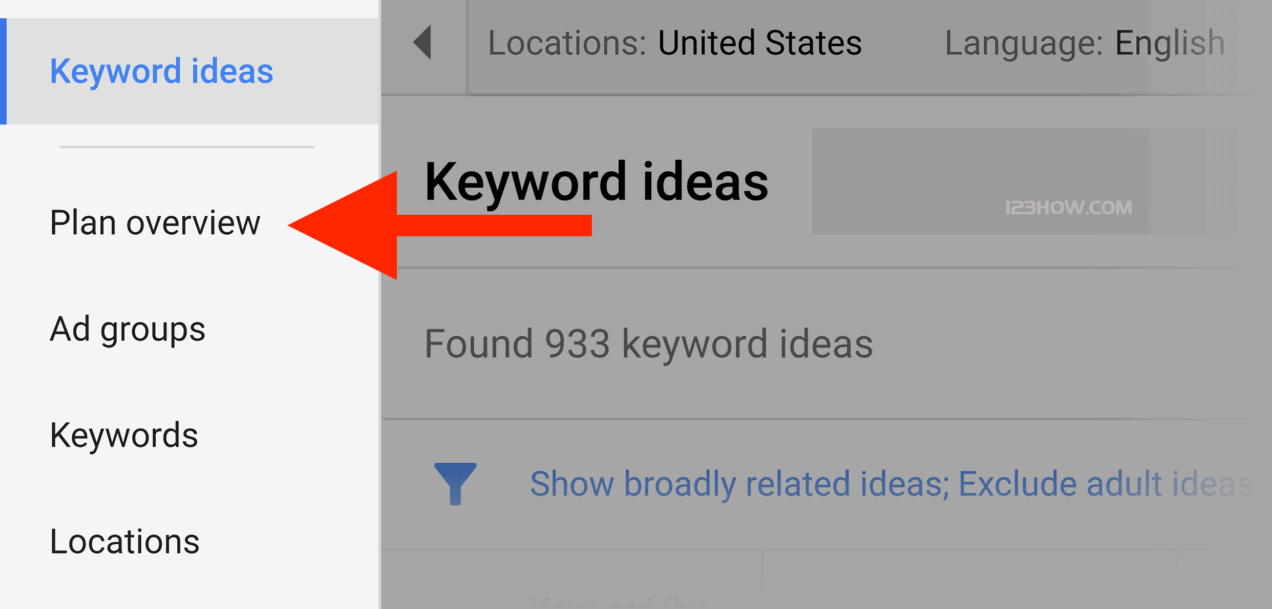
See how many "impressions" you get if you bid on that word:
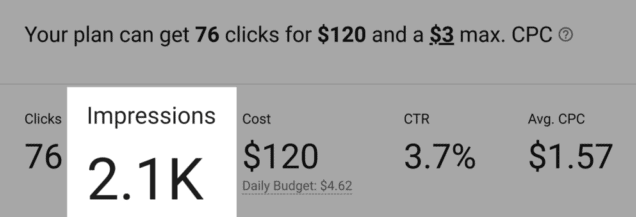
This number is the number of people searching for that keyword each month.
(In this case, 2.1k searches per month.)
That's it, you can now get the exact search volume data for your keywords. Awesome!
Bonus Step 2: GKP Hack
As you can see, Google Keyword Planner is pretty cool.
That said, the Google Keyword Tool has two major flaws ......
Defect 1::It only provides keyword hints that are very closely related to what you have entered.
For example, let's say your business sells organic pet food.
So you type "organic dog food" into the tool. Here are the results you get:
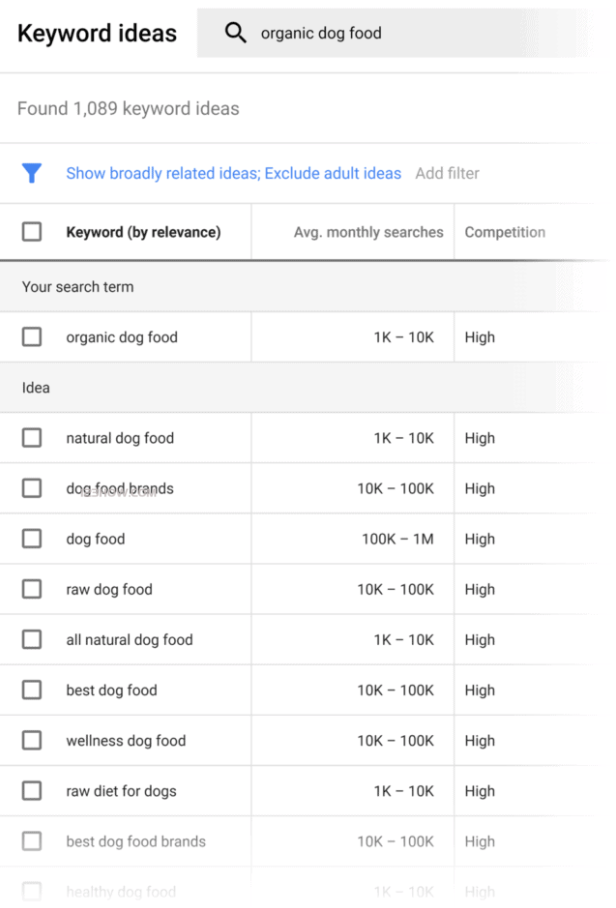
As you can see, these are very close variations of "organic dog food", for example:
- "Natural dog food."
- "Dog Food Brands"
- "Dog food."
I don't know about you, but I don't need fancy tools to come up with keywords like "dog food."
The same is true for most keywords.GKP is good at coming up withLong-tail versions of keywords. But it is not good at generating novel keyword ideas.
Defect 2You.Get the same set of keywords as everyone else.
It goes without saying that Google Keyword Planner is a very popular keyword tool.
This means: the keywords you find in GKP tend to be extremely competitive.
Fortunately, there's a simple solution to both of these frustrating problems: the GKP Hack.
It works as follows:
First, go to the "Discover New Keywords" area of GKP. Then click on "Start with Website".
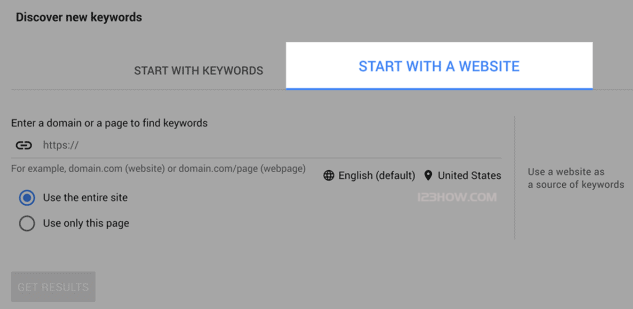
But instead of typing in keywords, youEnter the URLs of other websites in your industry.
For example, instead of entering "Organic Dog Food" in the field, let's use PetSmart's Dog Food category page.
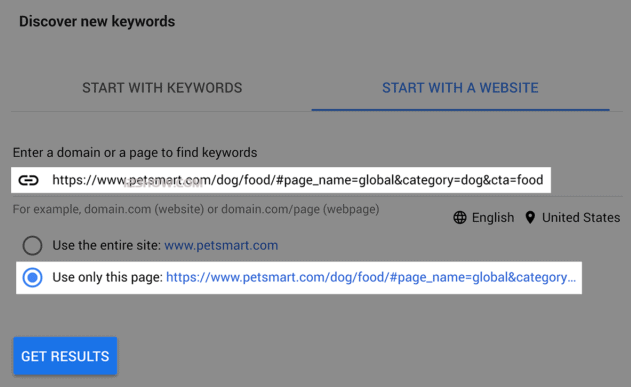
OK!
You'll get a list of keywords that most of your competitors will never see.
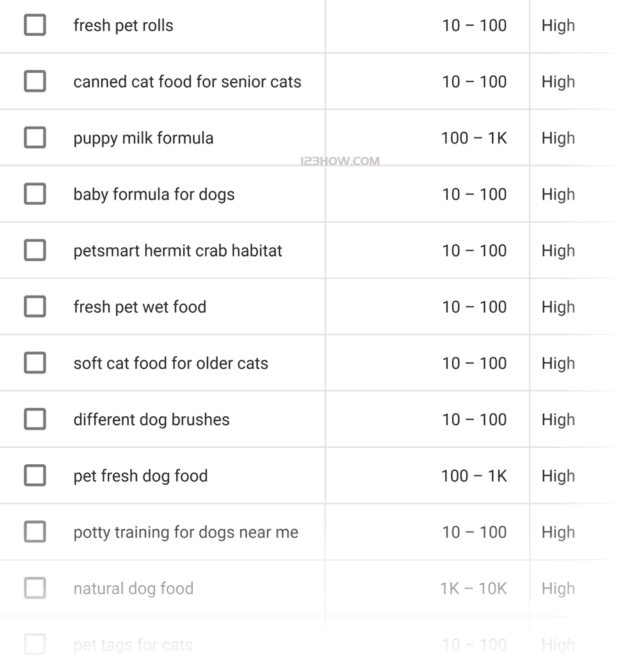
It gets better...
There are many other pages available for GKP Hack, including:
- Blog Posts
- press release
- Agenda of the meeting
- Resume pages of influencers in your industry
- story
- Podcast Recordings
Basically: any page containing text can use this technique.
Related posts
Website Settings
URL style switching
URL Card Button
Layout settings
Left Sidebar Menu
Maximum page width
Search box settings
Customize the search box background
Customize the height of the search box
- spotlight
- text
- default (setting)








 Gan Gongwang Anbei 36070002000003
Gan Gongwang Anbei 36070002000003